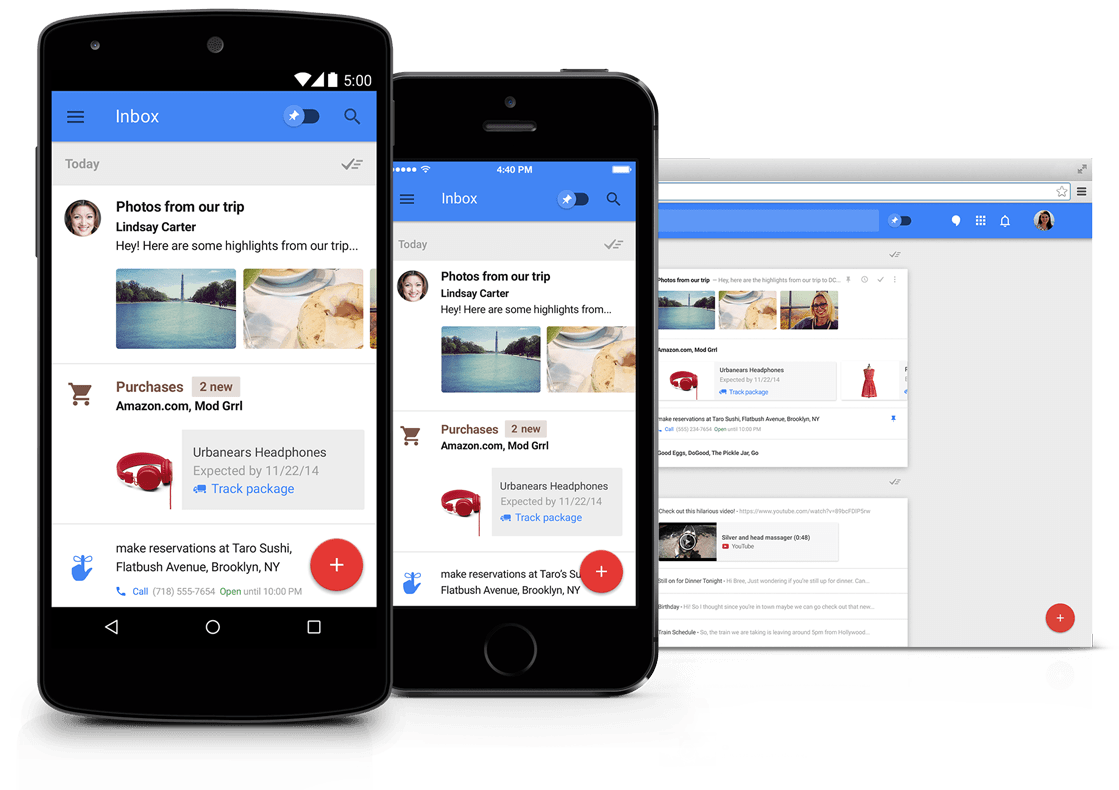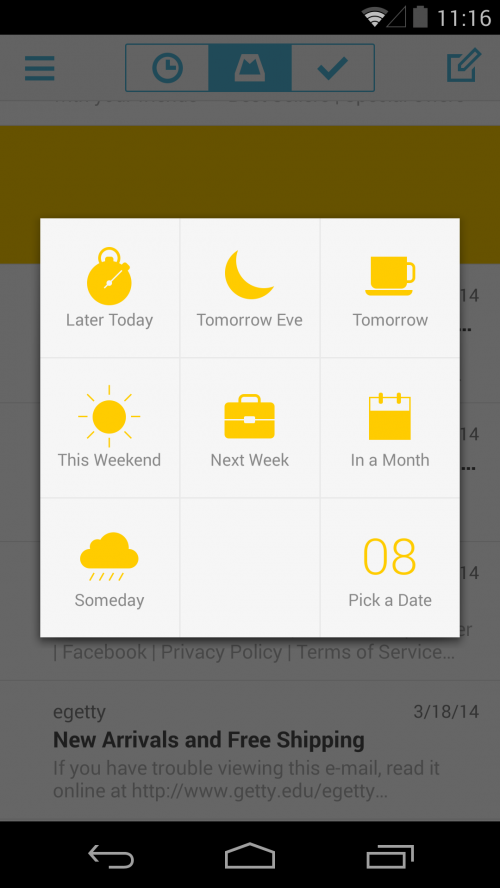A FEW days back, Google released a new email product called Inbox By Gmail. It is a re-imagining of the email, an “inbox that works for you.”
Google said the product, currently available only by invitation, was built on things they learned from their pioneering email service, GMail. It is, according to the service’s website, a “fresh start that goes beyond email to help you get back to what matters.”
I got into the service and found it visually refreshing. It incorporates Google’s Material Design style guide for consistent look and interaction across all devices. It is much more visually appealing than current email clients, including the existing GMail application.

INBOX BY GMAIL. The service is a re-imagining of the email into an “inbox that works for you.”
Sorting of messages
A key feature of the app is the use of Bundles that groups together related emails using automatic sorting introduced in GMail with its tabbed inbox feature for Social, Promotions and Updates.
The default bundles are Travel, for travel-related emails such as flight confirmations and hotel reservations; Purchases, for receipts, shipping updates and other purchase-related communications; Finance, for bills, bank statements and other finance-related updates; Social, for social networking notifications; Updates, for notifications, alerts and confirmations for online accounts; Forums, for messages from discussion groups and mailing lists; and Promos, for marketing emails and deals.
The app is a solid replacement for the existing GMail application although you can keep both.
But, and it is a big one, Inbox works only with a personal GMail account. It does not work with custom domains that are part of the Google Apps For Work package.
Custom domains
I only use my GMail account for social networking alerts and sign-ups for services that review. For my main email account, I use max@limpag.com but manage it using GMail via Google Apps For Work. When I tried using it with Inbox, I got the notification “Your organization isn’t set up for inbox yet.” I don’t know whether the feature will be offered to Google Apps For Work domains, which has been the case for most new Google features.
What Google is doing with the service is turning on the power of its algorithms to make email work for users. The bundling of notifications, alerts and updates allows you to focus on important emails.
Several tech news sites describe the service as Google Now managing your email. Google Now, for the unfamiliar, is a re-imagining of search into being personal, automatics and mobile to give people the “right information at the right time” on phones and tablets.
I’ve decided to set aside Inbox by Gmail and my remaining invitations until it becomes available for use with custom domains.
Mailbox app

SNOOZING A MESSAGE. With Mailbox by Dropbox, you can snooze a message by swiping left and then setting a date on which you are notified about the email again. (FROM THE MAILBOX PRESS SITE)
In the meantime, I will keep on using my default email client Mailbox, which is among the pioneers of great mobile email software. Mailbox, which was bought by Dropbox, is free and has apps for iOS, Android and Mac OSX.
Mailbox is, for me, the best email client both on the phone and desktop (at least in Mac). With the app, you go through your emails by swiping messages that are displayed on cards—to the right to label it as read and dismiss it from the inbox, long swipe to the right to delete it, swipe left to schedule the email to be delivered again at a later time and long swipe left to put the email on a list.
What is striking in the announcement of Inbox by Gmail is the prominence it gives to the mobile experience. Inbox looks good and works well on mobile.
Think mobile
The release is consistent with an industry-wide move to mobile. Services and products are going to where people’s attention already are — on smaller devices that we carry around with us wherever we go.
People are now using mobile more and more for day-to-day tasks – writing and reading emails, social networking, reading information and news, checking the weather, communication with people and even machines.
If your product isn’t built, or rebuilt, for mobile, people might bear with it for a while. But soon, they’ll find a replacement. Every day, a new product or service comes out that is built natively for mobile.
In today’s environment, the only way to go big or to stay big is to think small.
The post Re-imagining for mobile appeared first on Leon Kilat : The Tech Experiments.